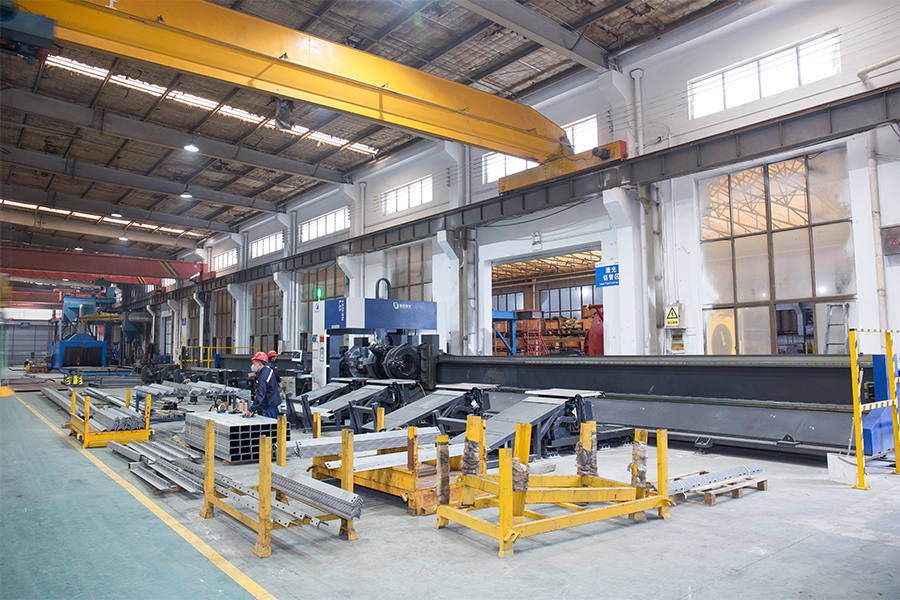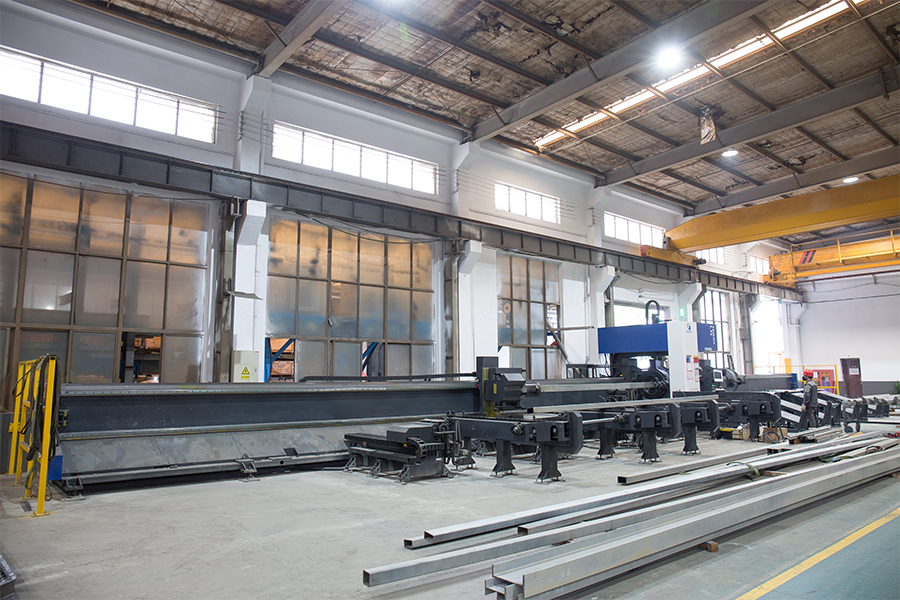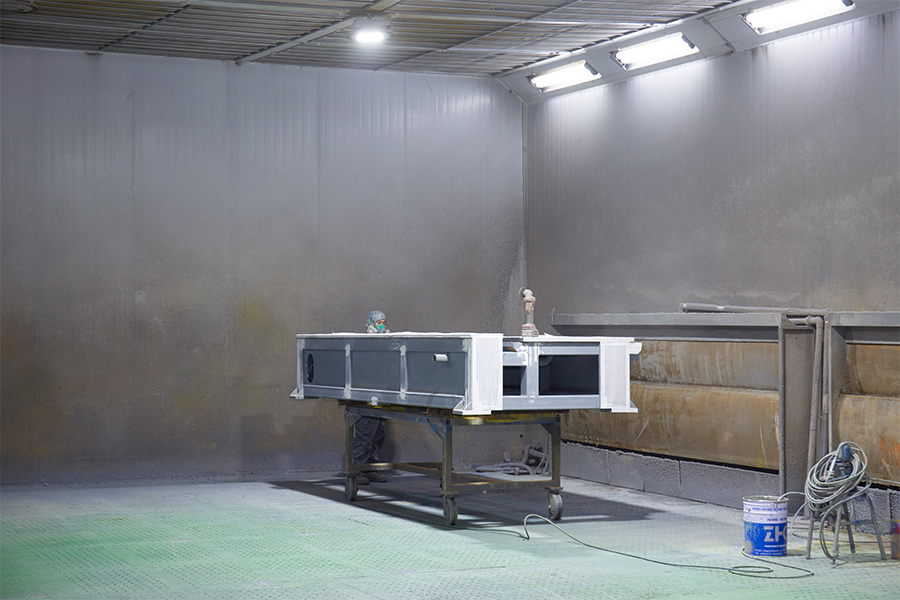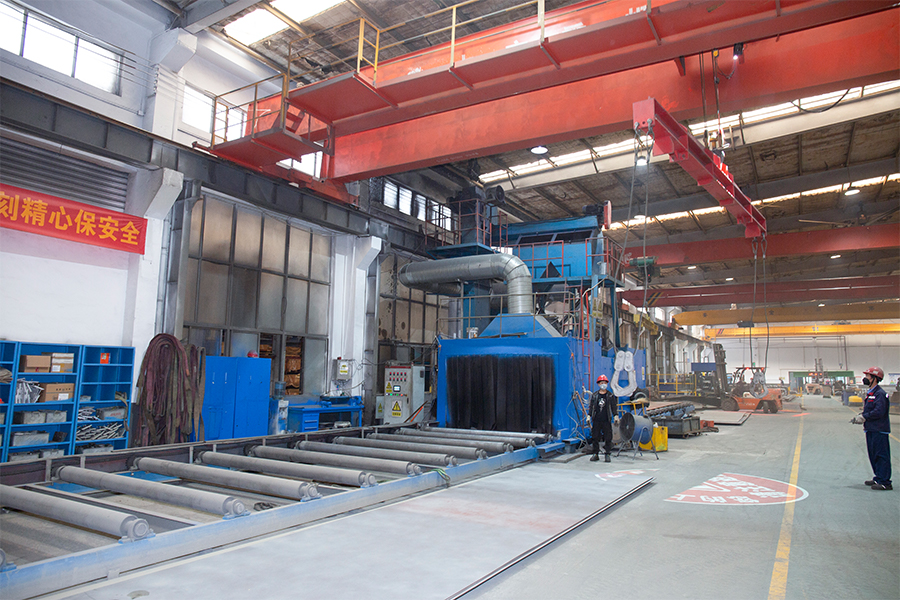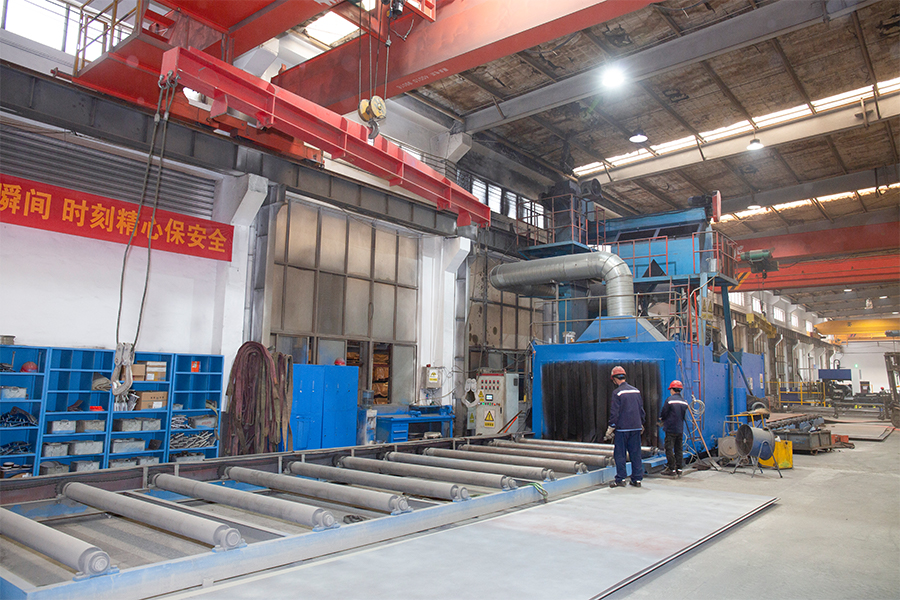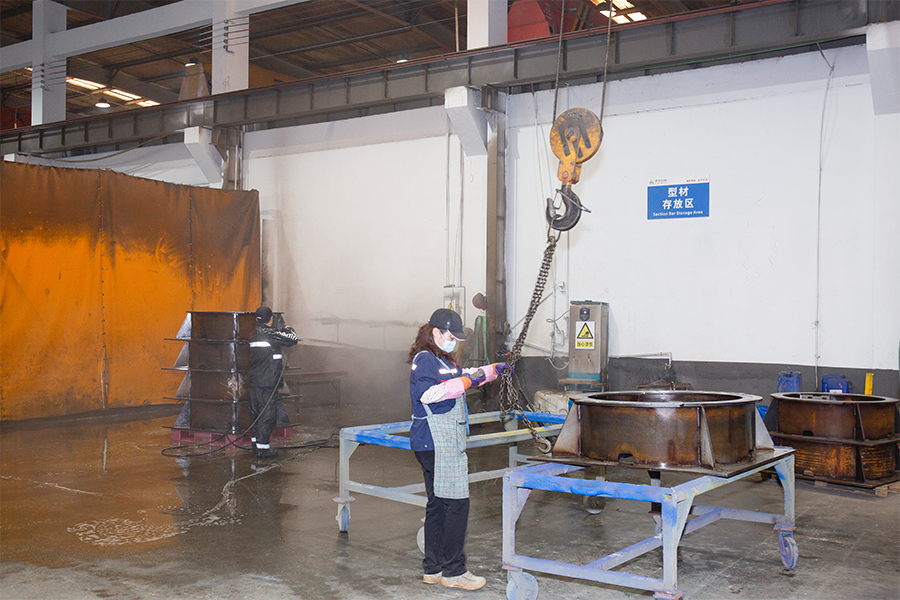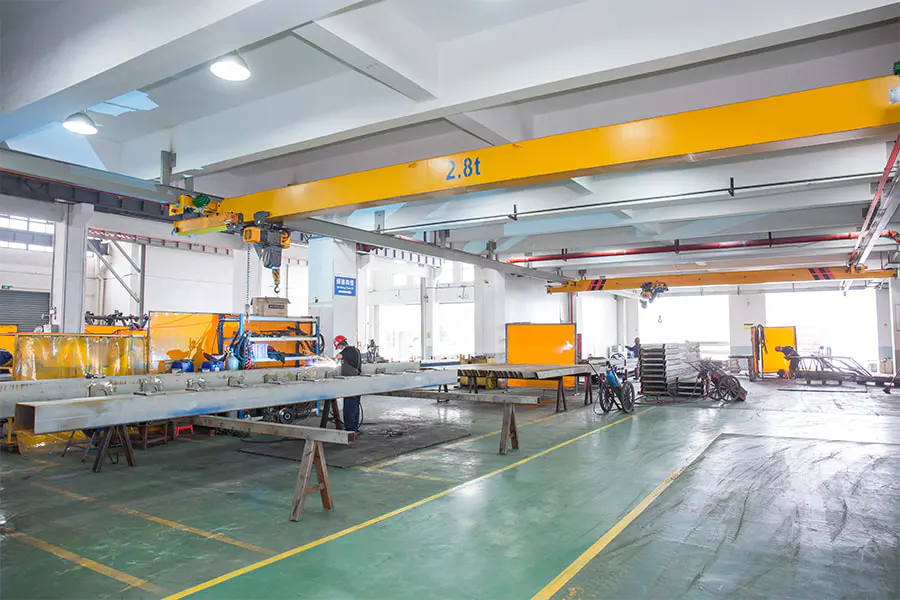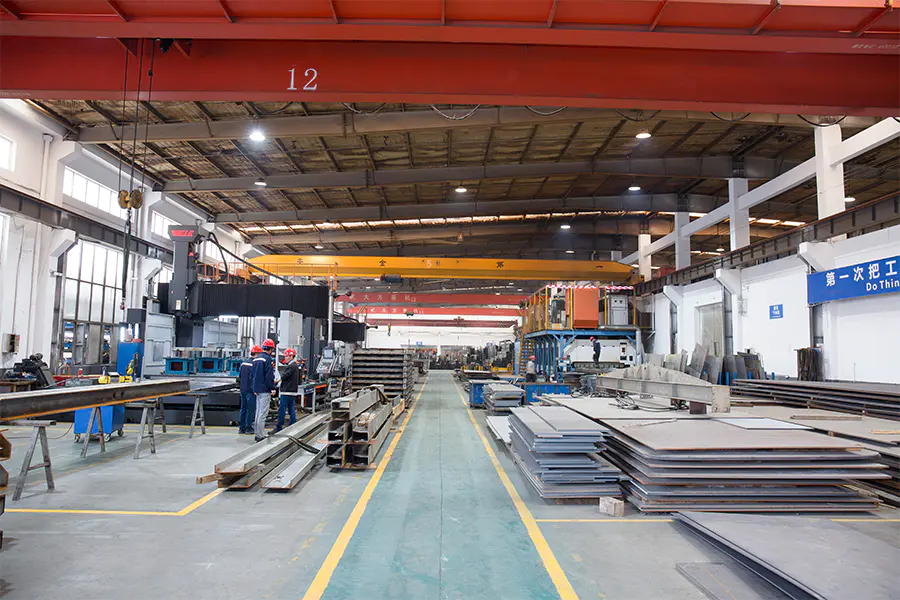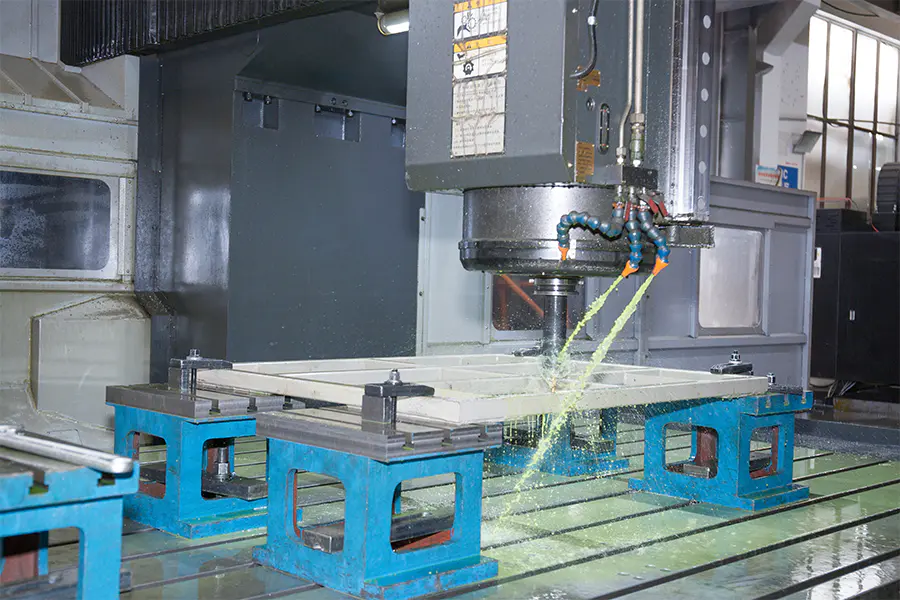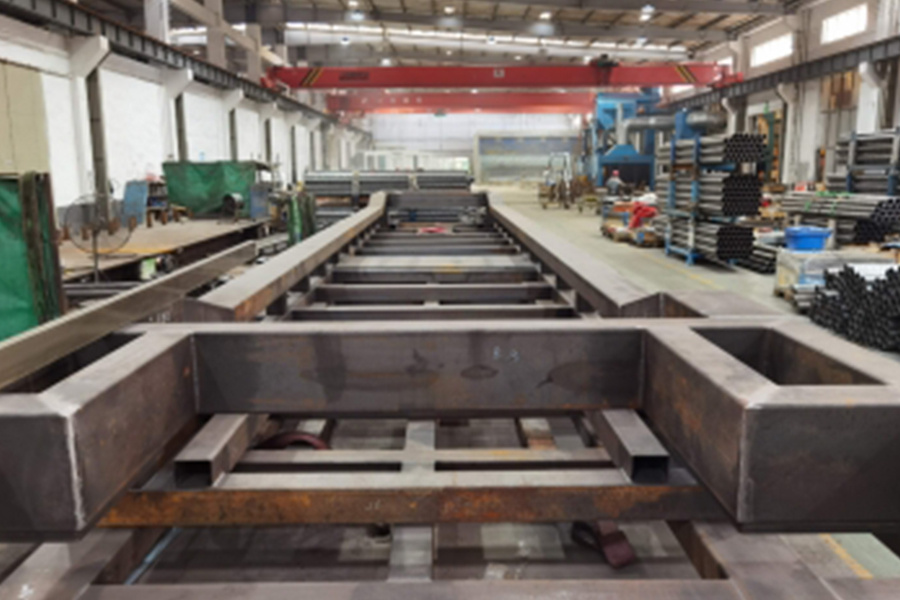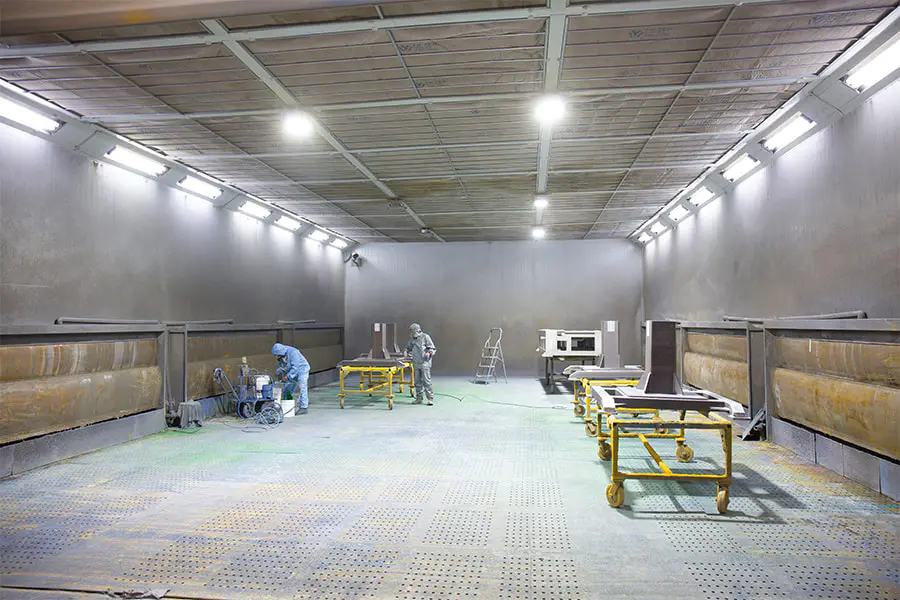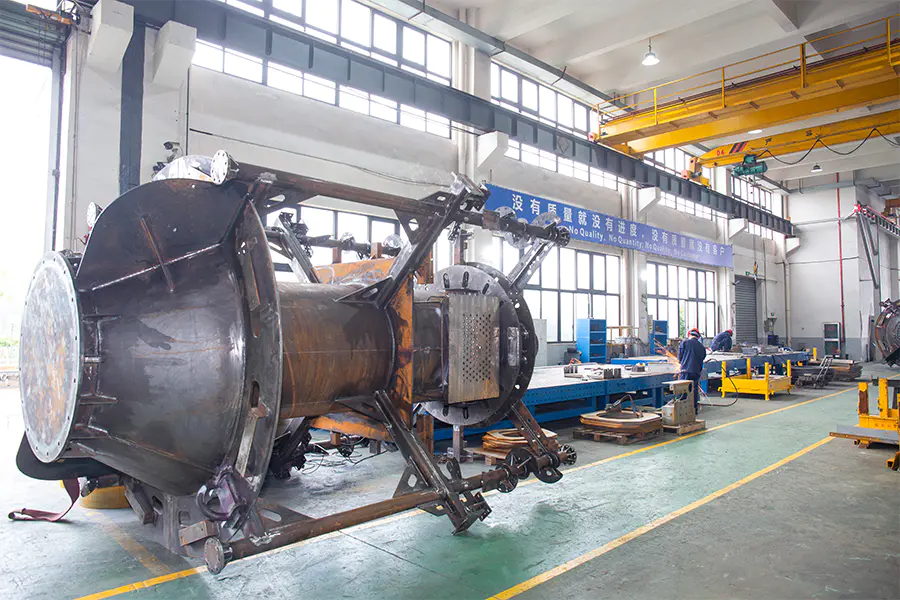In the equipment steel structure manufacturing, the assembly node is the key part connecting each component, and its strength and stability are directly related to the bearing capacity, operation safety and service life of the entire equipment. To ensure the quality of the assembly node, it is necessary to build a complete guarantee system from multiple dimensions such as technical specifications, process control, and quality inspection, and rely on professional teams and advanced equipment to achieve precise operation.
1. Node strength guarantee based on the design source
The guarantee of node strength and stability begins with scientific and reasonable design. The professional design team will carry out targeted design of the node structure according to the load requirements of the equipment, the use environment and other factors, including selecting appropriate connection methods (such as welding connection, bolt connection, rivet connection, etc.), determining the geometric dimensions and force distribution of the node. For example, for nodes that bear large loads, the bearing capacity of the node will be improved by increasing the thickness of the connecting plate, optimizing the weld layout or using high-strength bolt groups.
In the design conversion stage, the theoretical design needs to be converted into executable assembly drawings to clarify the assembly sequence, matching accuracy and connection requirements of each component of the node. Taking Jiaxing Dingshi Machinery Manufacturing Co., Ltd as an example, it has 20 professional factory technical designers with strong drawing design conversion capabilities. They can accurately disassemble complex node designs into assembly processes, provide clear guidance for subsequent assembly operations, and reduce node strength problems caused by design conversion errors from the source.
2. Quality control of materials and components
The strength of assembly nodes depends on the quality of materials and components that constitute the nodes. Before assembly, raw materials such as steel, bolts, and welding rods must be strictly inspected to ensure that their mechanical properties (such as tensile strength, yield strength, etc.) meet the design standards. For example, high-strength bolts must have corresponding hardness and toughness, and the model of welding rods must match the parent material to avoid breaking or deformation of nodes when subjected to force due to substandard materials.
At the same time, precision inspection is carried out on parts that have been processed by cutting, bending, machining and other processes to ensure that their dimensional tolerances and form and position tolerances meet assembly requirements. Jiaxing Dingshi Machinery Manufacturing Co., Ltd has high-precision equipment such as 30-kilowatt laser plate cutting machines, 4-meter and 6-meter gantry machining centers, etc., which can ensure the machining accuracy of components and lay the foundation for the precise assembly of nodes. If there is a dimensional deviation in the components, it may cause stress concentration during assembly, which in turn affects the stability of the nodes.
3. Accurate execution of assembly process
The rationality and execution accuracy of the assembly process are the core of ensuring the strength of the nodes. Specifically, we need to start from the following aspects:
Assembly sequence optimization: According to the structural characteristics of the node, formulate a reasonable assembly sequence to avoid the inability to accurately dock the components or generate additional stress due to improper assembly sequence. For example, for complex steel structure nodes, positioning assembly must be carried out first to ensure that the relative positions of the components are accurate before the final connection is made to prevent deformation of the nodes due to forced assembly.
Standard operation of connection method:
When welding connection, it is necessary to select appropriate welding methods (such as manual arc welding, submerged arc welding, etc.) and welding parameters (such as current, voltage, welding speed, etc.) according to the stress conditions of the node to ensure that the penetration and strength of the weld meet the requirements.
When bolting, the preload of the bolts must be strictly controlled to ensure the tightness and rigidity of the bolt connection. By using tools such as torque wrenches, tighten the bolts according to the torque value required by the design to prevent the nodes from loosening due to insufficient preload or the bolts from breaking due to excessive preload.
Positioning and fixing accuracy control: During the assembly process, use precision positioning tools (such as positioning pins, total stations, etc.) to ensure the positioning accuracy of each component and reduce assembly errors.
4. Quality inspection during assembly
In order to promptly discover problems that may affect the strength of the node during the assembly process, full-process quality inspection is required:
Process inspection: During the assembly process, quality inspectors need to conduct real-time inspections of key processes (such as positioning, welding, bolt tightening, etc.) to check whether the assembly meets the process requirements. For example, check whether there is welding deformation during the welding process. If deformation is found, it must be corrected in time to prevent the accumulation of deformation from affecting the stability of the node.
Size and position accuracy detection: Use high-precision detection equipment such as laser trackers and three-coordinate measuring machines to detect the size and position accuracy of the assembled nodes to ensure that they meet the requirements of the design drawings. If deviations are found, timely adjustments are required to avoid uneven deformation of nodes under stress due to dimensional tolerance.
Connection strength test: For important nodes, sampling connection strength tests are required, such as shear tests of bolted connections and tensile tests of welded connections, to verify whether the actual bearing capacity of the nodes meets the design standards.
5. The role of environment and equipment
The assembly environment and equipment also have an important impact on the assembly quality of nodes:
Environmental control: During the assembly process, the working environment must be kept clean and dry to avoid dust, moisture, etc. from affecting the assembly accuracy and connection quality. For example, a humid environment may cause pores during welding, affecting the strength of the weld; dust may affect the tightness of the bolted connection.
Advanced equipment support: Modern assembly equipment can improve assembly accuracy and efficiency. For example, the hydraulic lifting platform and automated assembly line used by Jiaxing Dingshi Machinery Manufacturing Co., Ltd. can achieve precise alignment and stable fixation of components, reduce errors caused by manual operation, and ensure that the connection of each component of the node is more accurate, thereby improving the strength and stability of the node.
6. Perfect quality management system
A perfect quality management system is an institutional guarantee to ensure the quality of assembly nodes. Enterprises need to establish a full-process quality management system from design, procurement, production to inspection, and clarify the quality responsibilities and control requirements of each link. Through the certification of quality management system, environmental management system and occupational health and safety management system, the assembly process can be managed in a standardized manner to ensure that each process meets the quality standards and guarantee the strength and stability of the node from the institutional level. At the same time, through continuous quality improvement activities, the assembly process and testing methods are continuously optimized to improve the stability of node quality.

